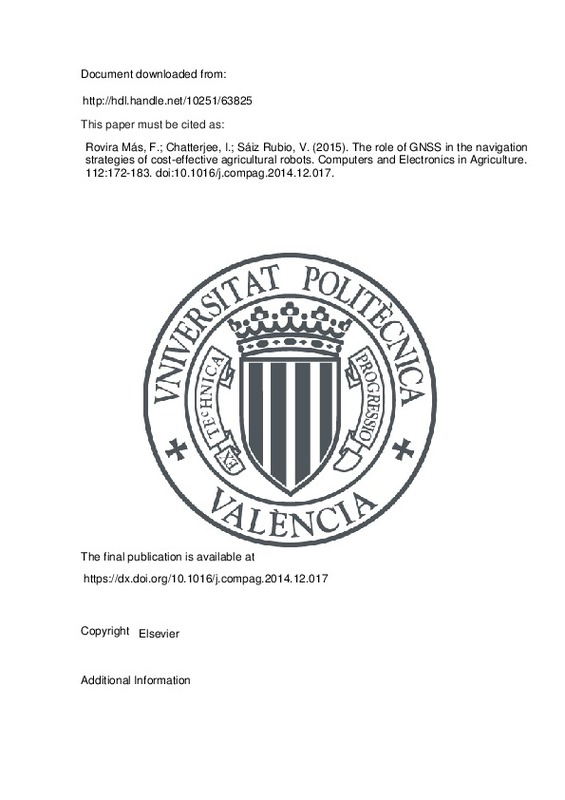JavaScript is disabled for your browser. Some features of this site may not work without it.
Buscar en RiuNet
Listar
Mi cuenta
Estadísticas
Ayuda RiuNet
Admin. UPV
The role of GNSS in the navigation strategies of cost-effective agricultural robots
Mostrar el registro completo del ítem
Rovira Más, F.; Chatterjee, I.; Sáiz Rubio, V. (2015). The role of GNSS in the navigation strategies of cost-effective agricultural robots. Computers and Electronics in Agriculture. 112:172-183. doi:10.1016/j.compag.2014.12.017
Por favor, use este identificador para citar o enlazar este ítem: http://hdl.handle.net/10251/63825
Ficheros en el ítem
Metadatos del ítem
| Título: | The role of GNSS in the navigation strategies of cost-effective agricultural robots | |
| Autor: | CHATTERJEE, ISHANI | |
| Entidad UPV: |
|
|
| Fecha difusión: |
|
|
| Resumen: |
[EN] The current state of automation technology has led to a growing interest in the design and development
of new use-case agricultural robots that can provide effective solutions to the challenges that agriculture
is ...[+]
|
|
| Palabras clave: |
|
|
| Derechos de uso: | Reserva de todos los derechos | |
| Fuente: |
|
|
| DOI: |
|
|
| Editorial: |
|
|
| Versión del editor: | https://dx.doi.org/10.1016/j.compag.2014.12.017 | |
| Tipo: |
|







![[Cerrado]](/themes/UPV/images/candado.png)


